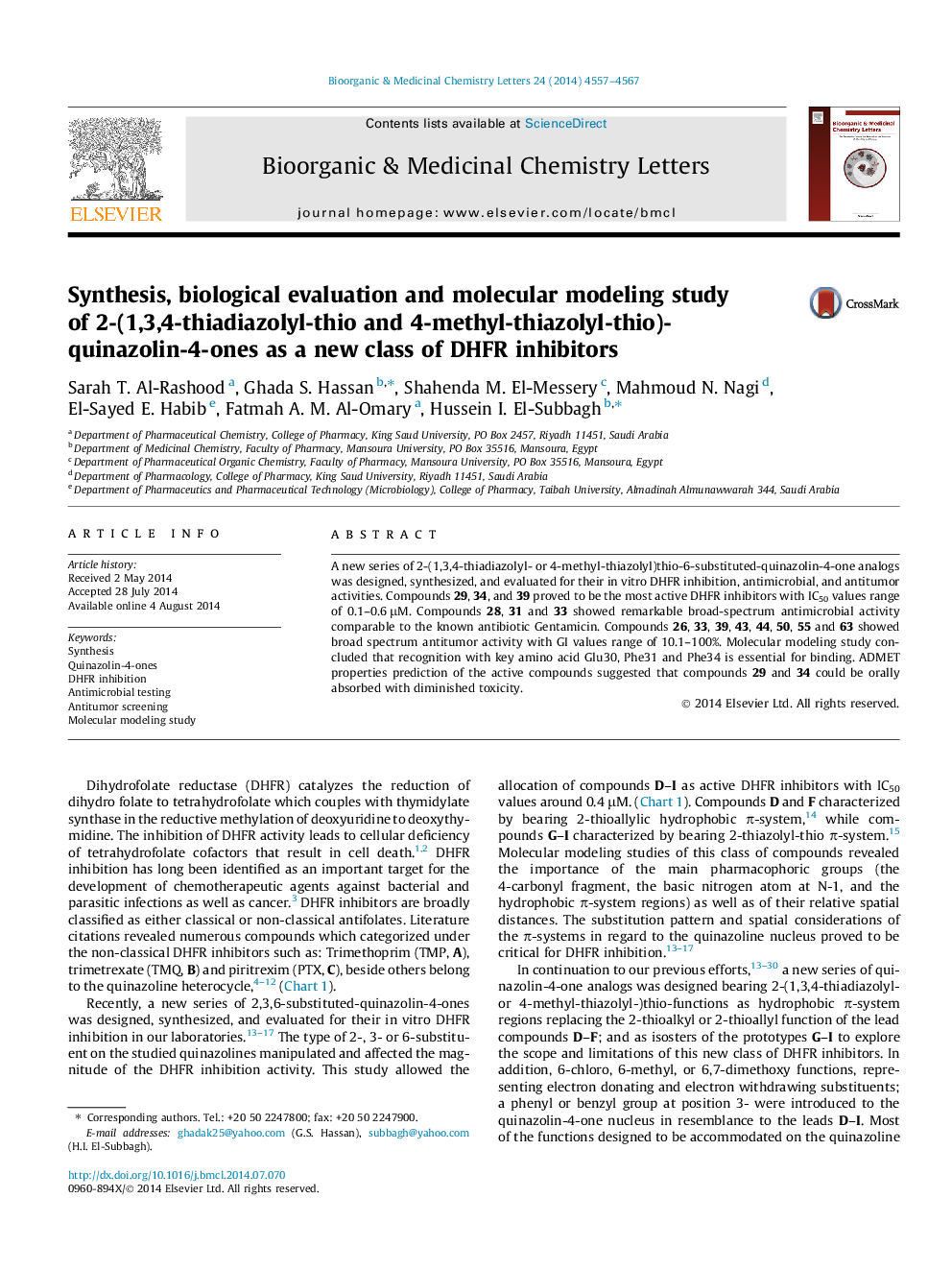| Article ID | Journal | Published Year | Pages | File Type |
|---|---|---|---|---|
| 1368869 | Bioorganic & Medicinal Chemistry Letters | 2014 | 11 Pages |
A new series of 2-(1,3,4-thiadiazolyl- or 4-methyl-thiazolyl)thio-6-substituted-quinazolin-4-one analogs was designed, synthesized, and evaluated for their in vitro DHFR inhibition, antimicrobial, and antitumor activities. Compounds 29, 34, and 39 proved to be the most active DHFR inhibitors with IC50 values range of 0.1–0.6 μM. Compounds 28, 31 and 33 showed remarkable broad-spectrum antimicrobial activity comparable to the known antibiotic Gentamicin. Compounds 26, 33, 39, 43, 44, 50, 55 and 63 showed broad spectrum antitumor activity with GI values range of 10.1–100%. Molecular modeling study concluded that recognition with key amino acid Glu30, Phe31 and Phe34 is essential for binding. ADMET properties prediction of the active compounds suggested that compounds 29 and 34 could be orally absorbed with diminished toxicity.
Graphical abstractCompounds 29, 34 and 39 showed DHFR inhibition (IC50 range of 0.1–0.6 μM). Recognition with key amino acids Glu30, Phe31 and Phe34 is essential for receptor binding.Figure optionsDownload full-size imageDownload as PowerPoint slide
